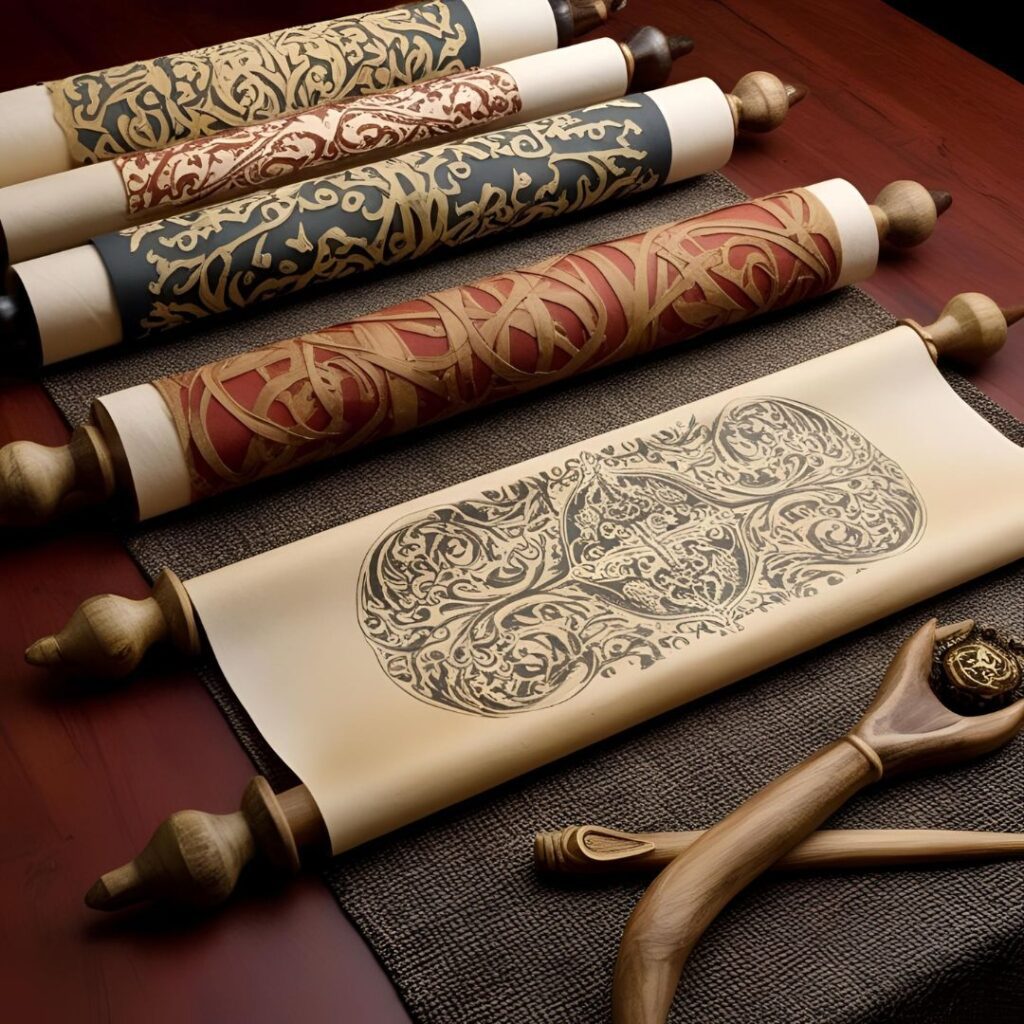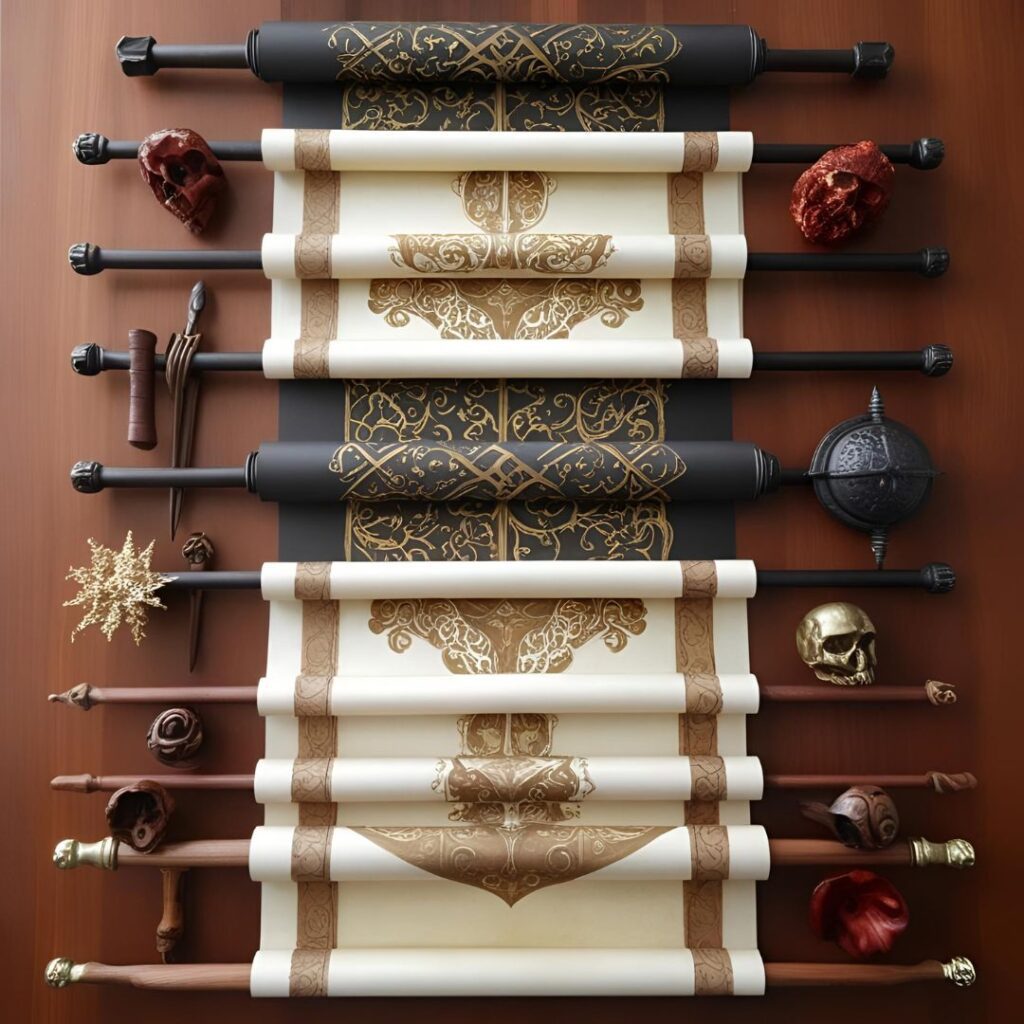Learn how to create handmade parchment in medieval style with this practical guide. Discover how to prepare the paper, age it for an authentic touch, and create the texture and appearance typical of medieval documents.
Handmade parchment, with its rustic appearance and medieval style, is an excellent way to add a unique and historical touch to any project. Whether for Gothic calligraphy, creating custom invitations, or simply for decoration, the process of making parchment is a true return to the past. In this guide, we’ll show you how to create your own handmade parchment using natural materials and traditional techniques. By the end, you’ll be able to craft authentic-looking documents and pieces that evoke the charm of the Middle Ages.



Materials Needed to Create Handmade Parchment
Before you begin creating your medieval parchment, it’s essential to have the right materials at hand. You can find most of these items in craft stores or online. Here’s what you’ll need:
- Handmade or Recycled Paper: The type of paper you use is crucial for creating authentic parchment. Handmade or recycled paper is ideal due to its irregular texture, which mimics the original parchment. If you can’t find handmade paper, watercolor paper or kraft paper also work well.
- Natural Ink or Dye: To give your parchment an aged look, you can use tea, coffee, or even vegetable-based inks.
- Calligraphy Tools: If you want to write on your parchment, you will need a quill or calligraphy pen and black or gold ink. Goose feathers or modern glass nib pens work well.
- Wax Seal (Optional): If you’d like to add a final medieval touch, you can use sealing wax to create wax seals, a classic element of medieval parchment.
Step 1: Preparing the Paper for the Parchment
The first step in creating your medieval parchment is preparing the paper. This step may take the most time, but it will give your parchment its authenticity and aged appearance.
Aging the Paper
To begin, you’ll need to “age” the paper to give it an old, worn look. Follow these steps:
- Soak the Paper: In a large bowl, prepare a strong tea or coffee mixture. Black tea or instant coffee works best. Submerge the paper in the mixture and let it soak for several minutes. The longer the paper soaks, the darker it will become.
- Drying: Remove the paper from the mixture and lay it flat to dry. You can use a hairdryer on low heat or let it dry naturally, but be careful not to crumple the paper as it dries.
- Ironing the Paper: Once the paper is completely dry, smooth it out using a hot iron (place a towel between the iron and the paper to prevent burning). This will help create a smooth, professional finish.
Step 2: Creating the Texture and Appearance of Medieval Parchment
Now that you have aged paper, it’s time to work on the texture and appearance of the parchment. To do this, you can use techniques that mimic the process of parchment-making in medieval times.
- Crinkling the Paper: To add a wrinkled effect, gently crumple the paper by hand, creating creases and folds as if it had been handled for centuries. This will give the parchment a natural wear-and-tear appearance.
- Burning the Edges (Optional): For an extra touch of authenticity, you can burn the edges of the paper with a candle. Hold the paper near the flame and watch the edges darken. This effect will imitate the aging of ancient parchments, but be cautious not to burn it too much and damage the paper.
- Adding Imperfections: If the paper is too perfect, add small stains using coffee or tea. This will create marks and spots, which are characteristic of medieval parchments.
Step 3: Writing on the Parchment
Now that you have aged and prepared the paper with an authentic appearance, it’s time to write on your parchment. For this, you can use Gothic calligraphy or any other medieval-style script.
- Calligraphy Tools: Use a calligraphy pen or a modern calligraphy pen with black or gold ink. Gothic calligraphy is one of the most popular styles for this, but you can opt for other medieval fonts, such as Italic.
- Calligraphy Tips: Keep your hand steady as you write, and make slow, deliberate strokes to ensure the ink doesn’t smudge and the writing has the traditional medieval parchment look.
- Decoration and Details: For an even more medieval effect, you can add decorations at the beginning or end of your text, such as ornamental letters or small drawings like flowers or leaves on the margins of the parchment.
Step 4: Finishing and Using the Parchment
Once the ink is completely dry, your parchment will be ready for use. If you’d like to add a final medieval touch, you can use sealing wax to seal the parchment, just as it was done in the past.
- Sealing with Wax: Heat a candle or a wax gun and drip wax onto the bottom of the parchment. Then, press a seal (it could be a medieval wax seal or a simple one with your initials) into the wax before it completely hardens.
- Displaying or Using the Parchment: Now that your parchment is complete, it’s ready for use. You can use it for calligraphy, create special invitations, decorate your space, or even use it as an artistic element. Handmade parchments are perfect for a wide range of projects, from creating historical documents to unique decorative pieces.
Creating handmade parchment in the medieval style is a fantastic way to immerse yourself in the art of antiquity and add a unique touch to your projects. From preparing the paper to writing and personalizing with wax, each step in the process helps create a final product that looks like it has come straight from a medieval castle. With the tips and techniques shared in this guide, you can begin creating your own parchments and bring historical and creative pieces to life.









